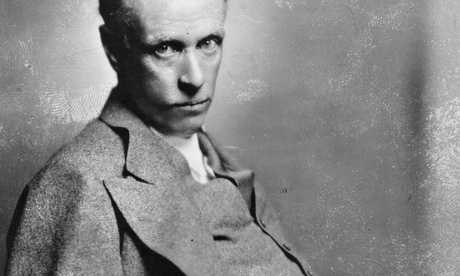
Babbitt, dedicated to Edith Wharton, was published in the same year as Ulysses (No 46 in this series) and likewise explores the passage through life of a middle-aged man. Coincidentally, the opening chapters follow the eponymous house agent's life during a single day. However, George F Babbitt, a self-intoxicated bully from the fictional city of Zenith, is a world away from Dublin's childless cuckold, Leopold Bloom. Similarly, Babbitt, a satire on 20s America by the controversial Sinclair Lewis, was a bestselling entertainment (the antecedents of which are found in Mark Twain, No 23 in this series) with an artistic intention far removed from Joyce's "silence, exile and cunning".
Yet, in his own way, Lewis took his writing very seriously, researching and annotating his subjects to the point where imagination often got forced aside. Introducing the novel to English readers, Hugh Walpole, a now forgotten literary figure of the 20s, declared that the first 50 pages are "difficult, the dialogue strange, the American business atmosphere obscure". But once the book takes hold, it becomes enthralling. Babbitt may be short on structure and narrative guile, but it's full of larger-than-life characters and vivid satire. "Babbittry", denoting a certain kind of bogus sales pitch, became part of the inter-war American lexicon. John Updike, who may feature later in this series, nods to this in his sequence of novels about "Rabbit" Angstrom, also a salesman. Both are writing about the American dream.
For Lewis, however, it's a socio-economic cul-de-sac from which he wants his heroes – George Babbitt, Elmer Gantry and the rest – decisively to break out. Similar desires might be said to animate the inner lives of some Arthur Miller protagonists, especially Willy Loman.
In Main Street, his acclaimed satire on the dullness of life in Gopher Prairie, Lewis had already challenged the romance of small-town America. In Babbitt he took on the midwestern, middle-sized city, and its ecology of American enterprise, celebrated in the term "boosterism".
Lewis recognised that these places, and their inhabitants, were not immune to social instability or economic depression, and that "boosting" these mid-American towns, and their stultifying way of life, offered no guarantee of stability after the upheavals of the first world war. When Babbitt comes to resent the middle-class prison of respectability in which he finds himself, striving to find meaning in an existence made trivial by mammon, the novel takes wing. His revolt resolves itself on his return to society, after a period of defiance and ostracism. He has been purged and renewed and, in the words of his son, is now "really going to be human".
Babbitt's adventures, narrated episodically, are designed to illustrate Lewis's argument and to cohere into a persuasive satire against US bourgeois conformity. Babbitt, like Galsworthy's Forsyte, whom – spoiler alert – I have chosen not to include in this series, is a symbol of American capitalism; Lewis a key transitional figure from Twain, especially, to the great postwar writers of the 1940s and 50s.
A note on the text
Babbitt, Lewis's eighth novel, was published in a hardback edition of some 400 pages in 1922. It was an immediate bestseller, and "Babbitt" entered the language to denote a "person and especially a business or professional man who conforms unthinkingly to prevailing middle-class standards".
In its first year of publication, Babbitt sold almost 150,000 copies in the United States, becoming a notable bestseller (a term then coming into vogue). Lewis had already enjoyed astonishing success with Main Street (1920). Inevitably, both books were contrasted, with opinion fairly equally divided. HL Mencken, the great American critic and columnist from Baltimore, adopted the cause of Babbitt, declaring himself "an old professor of Babbittry". Mencken brushed past Lewis's satire to find a passionate work of realism, in which George F Babbitt becomes a crucial archetype, representing those inter-war American city dwellers, sold on Republican conformity. Babbitt, according to Mencken, stood for everything that was wrong with American society.
Nevertheless, Babbitt fever swept the American reading public, and also caught the eye of critics, poets and writers. Vachel Lindsay wrote a poem entitled The Babbitt Jamboree, and in 1927 the English writer CEM Joad published The Babbitt Warren, a critique of US society. Babbitt is part of the reason Lewis was awarded the Nobel prize for literature in 1930, the first American novelist to receive the honour.
Three more from Sinclair Lewis
Main Street (1920); Arrowsmith (1925); Elmer Gantry (1927).

